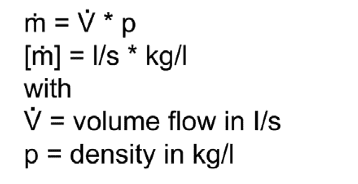COVID-19 has focused the world’s attention on ensuring public health by limiting the spread of airborne infection in public buildings and commercial facilities, it’s no surprise that examining the role played by heating, ventilation, air condition and refrigeration systems (HVAC/R) is currently top-of-mind. Medical specialists and safety experts are recommending industrial automation professionals implement measures such as purifying indoor air, improving interior ventilation, managing airflow, and boosting the volume of outside air in particular, as simple measures that can enhance indoor air quality and limit viral spread. Additionally, regulators are increasingly prohibiting the blending of a building’s fresh and exhaust air as a health measure. These initiatives can place additional stress on HVAC/R components, increase energy consumption and heighten the probability of machine failure. Therefore, it’s critical to be able to calculate and monitor equipment performance in order to improve energy efficiency and preemptively detect and predict machine failures and system performance issues. Fortunately, doing so is more straightforward and economical than many people realize.
COP monitoring and alarming helps optimize machine performance
Coefficient of performance (COP) is a measure of the efficiency of heating and cooling systems that is defined by the ratio of heat dissipation to electrical power intake, with higher numbers indicating a more efficient HVAC/R system. There are many reasons to continuously monitor COP, but chief amongst them are:
- Ongoing efficiency optimization – most modern HVAC/R systems run more economically at part load than full loads. COP monitoring help systems be continuously optimized for maximum performance at optimum minimum power input levels.
- Proactive problem identification and resolution – when COP deteriorates, equipment failure, downtime, and increased overhead often follow. Monitoring and alarming for COP fluctuations can help operators determine overall machine performance and help technicians to identify and resolve problems before a failure occurs.
Continuous COP monitoring provides more effective machine management because several external factors can impact the energy consumption and performance of HVAC/R systems, including:
- Load – air conditioning settings, cooling levels, usage patterns, etc.
- Outside temperature and humidity
- The cooling temperature
To reduce energy consumption and realize cost savings, it is necessary to understand the effect these outside factors have on HVAC/R machine performance and adjust as required.
Continuous COP calculation and alarming solutions are readily available
Economical and ready-to-use, or fully customizable COP calculation solutions based on Programmable Logic Controller hardware and HVAC/R programming software are amongst the COP calculation solutions on the market today. Components of which can include:
- Parametric Air Handling Unit program.
- Tested Validated Documented Architecture (TVDA) Air Handing Unit Machine programs, architecture, and user guides including wiring diagrams.
- Application Function Blocks related to the Air Handling Unit Machines in the Programmable Logic Controller’s platform.
Two different calculation methods to understand an HVAC/R machine’s COP value:
1.Using a flow meter
This calculation is based on the well-known formula below and is often considered “traditional” because it derives the thermal power rating through the use of a flow meter to measure mass flow rates.

Calculating the thermal power of a hydraulic system is based on the mass flow rate, the heat capacity of the medium, and the temperature difference of the refrigerant before and after heat dissipation.

For meters providing a volume flow, the mass flow is calculated according to:

Meanwhile, the electrical power reading can be obtained from a power/energy meter, or through conventional three-phase active power calculation methods, (P=√3*V*I*Cosɸ).
2. Without a flow meter
This method is generally considered more modern and is often more cost-effective. As with method #1, but calculating the flow instead of measuring it with an external sensor. The architecture is illustrated below and uses Application Function Blocks to calculate the mass flow, superheat density and enthalpy of the refrigerant.

Both methods are equally valid to calculate COP values. For example, if measured COP for an HVAC/R machine equals 3, that means 1kW of electrical power will produce 3 kW of cooling at the evaporator and 4 kW of heating at the condenser. The higher the COP, the more efficiently the machine operates
COP is fundamental to improving efficiency and safety

Continuous COP monitoring displays current status, but more importantly, it provides a complete picture of machine performance over time. Calculating instantaneous COP also enables the values to be logged, alarmed and monitored via graphical, or text based Human Machine Interfaces in parallel with Web Visualization via mobile devices virtually anywhere. HVAC/R operators can evaluate real-time machine data or assess it based on seasonal periods, short-term averages or user defined periods.
Gaining high-quality insights into machine performance is key to improving HVAC/R energy efficiency, plus the early detection and prediction of potential malfunctions. A low maintenance COP monitoring system as described above, also makes good business sense, in that it can also reduce operating costs, machine downtime and lower an operation’s CO2 footprint. In our current health and safety conscious, highly regulated world, where facility professionals need to do more with less, there are outstanding benefits to knowing your HVAC/R COP ratio.
To learn more, visit HVAC/R website or contact our Competency Center



